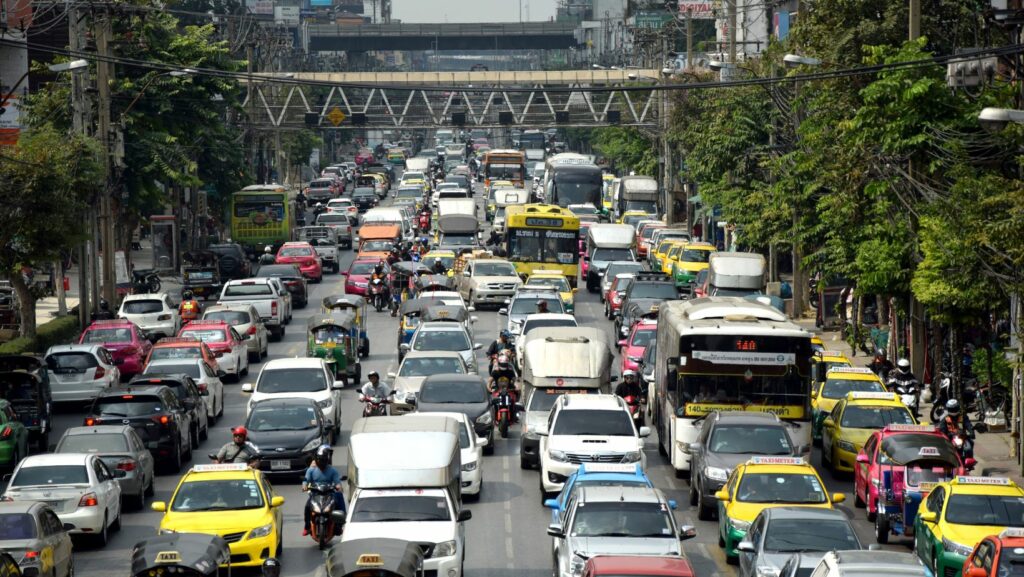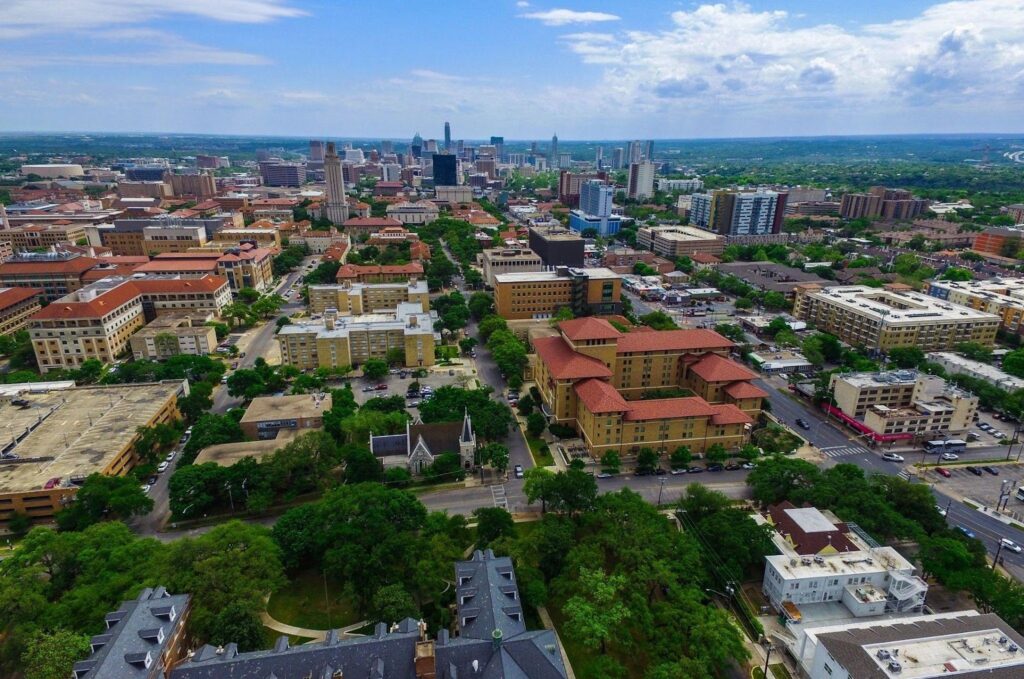You know what’s wild? Most of us blame traffic on broken-down cars, road work, or bad weather. But the truth is, the biggest traffic creator is sitting right behind the steering wheel – it’s us. The way our brains work when we’re driving, all those quick choices we make without even thinking about them, that’s what’s really turning our highways into crawling nightmares.
Think about your morning commute for a second. Every time you hesitate before merging, every time you get impatient and switch lanes, every split-second decision you make – it all matters way more than you’d think. These tiny moments add up and bounce from car to car like dominoes falling in slow motion.
The Phantom Traffic Jam Phenomenon
Phantom traffic jams occur when heavy congestion clears up without any apparent cause. No accidents, construction, or obvious obstacles explain the backup that suddenly disappears. Traffic engineers have documented this phenomenon extensively, finding it happens more frequently than most drivers realize.
These phantom jams typically originate with a single driver braking slightly harder than necessary. The following vehicle brakes harder to maintain safety, and subsequent cars brake progressively harder. This chain reaction continues backward through the traffic stream, creating increasingly intense braking waves that eventually stop traffic completely.
The original cause disappears long before affected drivers reach the front of the jam. The driver who initiated the chain reaction continues miles ahead, unaware of the resulting congestion.
Driver Overconfidence and Traffic Behavior
Psychological research shows that most drivers rate their abilities above average, a statistical impossibility known as the “better-than-average effect.” This overconfidence leads to risky behaviors that worsen traffic conditions.
Lane merging situations demonstrate this psychological bias clearly. When “Lane Closed Ahead” signs appear, some drivers merge immediately while others accelerate to advance as far as possible before merging. Early mergers often become frustrated with drivers who pass them, sometimes blocking merge attempts.
 Traffic engineers recommend the “zipper merge” technique, where drivers use both lanes until the merge point and alternate entry. Emotional responses and fairness perceptions override this logical approach, creating unnecessary bottlenecks.
Traffic engineers recommend the “zipper merge” technique, where drivers use both lanes until the merge point and alternate entry. Emotional responses and fairness perceptions override this logical approach, creating unnecessary bottlenecks.
Stress Responses in Traffic Situations
The problem is, this biological alarm system that once kept humans alive doesn’t exactly help when you’re inching along at 5 mph on the interstate. Your brain floods with stress chemicals, and suddenly you can’t think as clearly as you normally would. Maybe you’ve noticed this yourself – how you make questionable decisions in heavy traffic that you’d never make under normal circumstances.
When drivers get stressed out like this, they start doing things that make absolutely no sense if you think about it logically. They’ll ride someone’s bumper so closely you couldn’t slip a piece of paper between the cars. They’ll dart into tiny gaps between vehicles, cutting people off. They’ll slam on their brakes, then floor it, then brake again – all in the name of maybe saving thirty seconds.
Here’s where it gets really interesting: stress is contagious on the road. When one frazzled driver starts weaving through lanes and tailgating, it sets off a chain reaction. Other drivers see this behavior and either get defensive or start copying it. Before you know it, what started with one person having a bad day has infected an entire stretch of highway.
Technology’s Mixed Impact on Traffic Flow
GPS applications like Google Maps and Waze route drivers around congestion, while adaptive cruise control systems maintain optimal following distances. These technologies should improve traffic flow theoretically.
However, the same technologies sometimes worsen traffic conditions. When thousands of drivers receive identical alternate route suggestions simultaneously, they overwhelm smaller roads not designed for heavy traffic volumes. Multiple traffic jams result instead of resolving one.
Smartphone use contributes to traffic problems. Drivers checking devices at red lights miss green light changes, reducing intersection efficiency. Hands-free phone conversations significantly impair driving performance, though many drivers remain unaware of attention division.
Time Savings from Aggressive Driving
Traffic studies reveal that aggressive driving behaviors save minimal time. Risky lane changes that require cutting off other drivers typically save less than 30 seconds per commute.
Research comparing aggressive and patient driving shows differences of only a few minutes over 30-minute journeys during heavy traffic. Drivers accept increased stress levels, accident risks, and other driver frustration for these minimal time savings.
Humans demonstrate poor time and probability estimation abilities. People overestimate time savings from aggressive driving while underestimating associated risks. These calculation errors influence millions of daily driving decisions.
Weather and Temporal Traffic Patterns
Weather has this crazy way of getting inside our heads when we’re driving. Take a rainy day – sure, the roads are slick, but what’s really interesting is how that gloomy sky actually changes the way we think and make decisions. People get overly careful, sometimes to the point where they’re driving so slowly they’re creating their own traffic problems.
What’s really concerning is how much more dangerous things get when traffic is heavily congested. All that starting and stopping, people getting frustrated and making bad choices – it’s a recipe for accidents waiting to happen.
That’s exactly why you want to make sure your car insurance is current before heading out during those peak traffic times. If you’re looking to save some money on coverage, car insurance quotes Longview can help you see what different companies are charging, so you’re not overpaying for the protection you need.
Individual Decisions and Collective Traffic Effects
Individual driving decisions create collective traffic outcomes. Drivers who allow smooth merging and maintain safe following distances contribute to improved traffic flow for all road users.
Several cities have tested “pace cars” that maintain optimal speeds during rush hours to regulate traffic flow. When 5% of vehicles maintain steady, appropriate speeds, overall traffic flow improves significantly.
Traffic systems demonstrate how individual behavioral changes produce large-scale network effects. Small modifications in driving behavior can impact entire transportation systems.
Traffic Behavior Improvement Strategies
Here’s the good news: once you understand what’s really causing traffic nightmares, you can actually do something about it. And it’s not rocket science – just a few tweaks to how you approach your drive can make a huge difference, both for your own sanity and for everyone else stuck out there with you.
The simplest fix? Leave fifteen minutes earlier than you normally would. I know, I know – easier said than done when you’re juggling a million things in the morning. But that extra buffer time works like magic. When you’re not constantly checking the clock and calculating whether you’ll make it on time, your whole mindset shifts. You stop seeing other cars as obstacles and start seeing them as just people trying to get somewhere, same as you.
Another game-changer is giving yourself more space. Instead of riding the bumper of the car in front of you, back off a bit. It feels counterintuitive – like you’re “losing” somehow – but you’re actually giving yourself room to breathe and react smoothly instead of constantly hitting your brakes. And here’s the kicker: when you’re not constantly stopping and starting, neither is the person behind you, or the person behind them.
As for all that lane-hopping we do when traffic gets thick? Most of the time, it’s not actually getting us there any faster. We just think it is because doing something feels better than doing nothing. But every time we dart across lanes, we’re basically throwing a small wrench into the gears of traffic flow.

